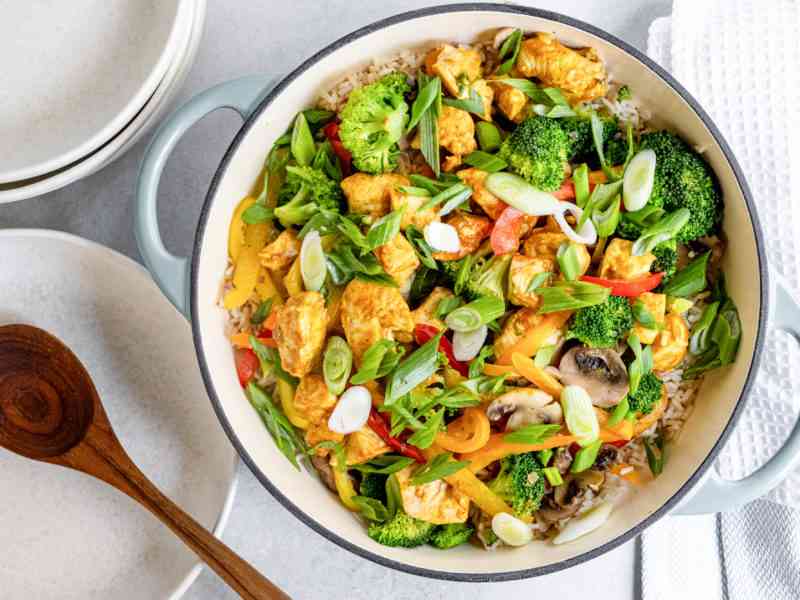
ENDOMETRIOSIS is a chronic and debilitating gynaecological disorder that affects millions of women worldwide.
Characterised by the growth of endometrial-like tissue outside the uterus, endometriosis can cause severe pelvic pain, heavy bleeding, and infertility.
While there is no cure for endometriosis, research suggests that dietary changes may play a crucial role in managing its symptoms.
In this article, we will explore the connection between gut health and endometriosis, and provide two recipes to help alleviate symptoms.
What's the link?
Endometriosis is a complex condition that involves the interaction of multiple factors, including hormonal imbalances, genetics, and environmental triggers.
Research has shown that the gut microbiome, the ecosystem of microorganisms living in the digestive tract, plays a significant role in the development and progression of endometriosis.
Studies have found that women with endometriosis tend to have an altered gut microbiome, with an overgrowth of certain bacteria and a decrease in beneficial microbes.
- Food & Travel: The art of following a gluten-free diet
- Food & Travel: How food can help manage endometriosis symptoms
Keep Reading
This imbalance can lead to inflammation, which is a hallmark of endometriosis.
Furthermore, the gut-brain axis, a bidirectional communication network between the gut and brain, is also disrupted in women with endometriosis. This can lead to symptoms such as chronic pain, fatigue, and mood disorders.
Food triggers and endometriosis
While there is no single "endometriosis diet", certain foods may exacerbate or alleviate symptoms. Some common food triggers include:
Saturated and trans fats: These types of fats can increase inflammation and worsen symptoms.
Processed foods: High-sugar and processed foods can disrupt the gut microbiome and contribute to inflammation.
Dairy products: Some women with endometriosis may experience worsened symptoms after consuming dairy products, which can be due to lactose intolerance or sensitivities.
Gluten: Gluten-containing grains can trigger inflammation in some individuals. On the other hand, certain foods may provide relief.
Omega-3 rich foods: Fatty fish like salmon and sardines are rich in omega-3 fatty acids, which reduce inflammation.
Fiber-rich foods: Fiber-rich fruits, vegetables, and whole grains can help regulate bowel movements and reduce inflammation.
Antioxidant-rich foods: Foods high in antioxidants, such as berries and leafy greens, can help reduce oxidative stress.
Omega-3 rich salmon with quinoa, vegetables
This recipe combines the anti-inflammatory properties of omega-3 fatty acids with fiber-rich quinoa and antioxidant-rich vegetables.
Ingredients
4 salmon fillets (6 oz each)
1 cup quinoa
2 cups water or vegetable broth
2 tablespoons olive oil
1 onion, diced
2 cloves garlic, minced
1 cup mixed vegetables (bell peppers, carrots, broccoli)
Salt and pepper to taste
Fresh parsley, chopped (optional)
Instructions
Preheat oven to 400°F (200°C)
Cook quinoa according to package instructions
Season salmon fillets with salt and pepper
In a large skillet, heat olive oil over medium-high heat. Addonion and garlic; cook until softened
Add mixed vegetables; cook until tender
Add salmon fillets; cook for 4-6 minutes per side or untilcooked through
Serve salmon on top of quinoa with roasted vegetables
Gut-friendly vegetable stir-fry with turmeric
This recipe incorporates turmeric, a natural anti-inflammatory spice, with fiber-rich vegetables to promote a healthy gut microbiome.
Ingredients
2 tablespoons coconut oil
1 onion, diced
2 cloves garlic, minced
1 cup mixed vegetables (sweet potatoes, carrots, zucchini)
1 teaspoon ground turmeric
Salt and pepper to taste
Fresh cilantro, chopped (optional)
Instructions
Heat coconut oil in a large skillet over medium-high heat
Add onion and garlic; cook until softened
Add mixed vegetables; cook until tender
Add turmeric; stir well to combine
Season with salt and pepper to taste
Serve hot garnished with chopped cilantro (if desired)
Conclusion
While there is no single "endometriosis diet" incorporating omega-3 rich foods, fiber-rich foods, antioxidant-rich foods, and anti-inflammatory spices like turmeric into your diet may help alleviate symptoms.
By making conscious food choices and avoiding trigger foods, you may find relief from chronic pain, heavy bleeding, and other symptoms associated with endometriosis.
Remember to consult with your healthcare provider before making any significant changes to your diet.
By incorporating these recipes into your meal routine, you will be taking steps towards promoting a healthier gut microbiome and managing your endometriosis symptoms naturally.
- Muzamhindo is a young chef with seven years’ experience in a professional kitchen and has enjoyed the concept of food since the tender age of two. She studied at the South African Chefs Academy in Cape Town and the Culinary Arts Academy in Zimbabwe to become a level three advanced chef. Her specialties range from indigenous ingredients to fine dining, gourmet food, food health and safety and food research and development. — ruwarashemuzamhindo@gmail.com.










